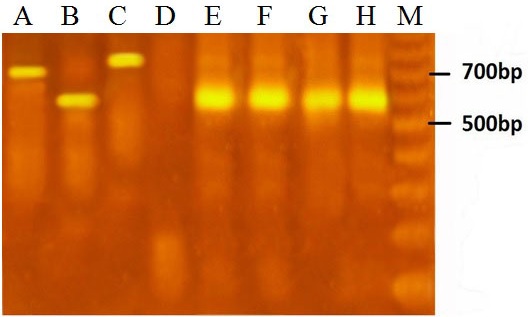P-ISSN: 2349-6800, E-ISSN: 2320-7078
Journal of Entomology and Zoology Studies
2014, Vol. 2, Issue 6
Study on reservoirs of cutaneous leishmaniasis using molecular methods of PCR-RFLP in endemic foci of disease, north east of Iran
Sayena Rafizadeh, Mehrzad Saraei, Mohammad Reza Abai, Mohammad Ali Oshaghi, Mehdi Mohebali, Amir Peymani, Taghi Naserpour Farivar, Hassan Bakhshi, Alireza Akrami, Yavar Rassi
Zoonotic cutaneous leishmaniasis (ZCL) due to Leishmania major is a great public health problem in the Old World. Rodents are important reservoir of causative agent of disease is widely distributed in arid and savannah regions. Esfaryen district is one of the most important endemic foci of zoonotic cutaneous leishmaniasis (ZCL) in Northeast of Iran. To identify the reservoir(s) of Leishmania in this focus, a total of 44 rodents were collected using Sherman traps during September to December 2013. They were identified as Rhombomys opimus Lichtenstein (72.7%) and Meriones libycus Lichtenstein (27.3%). Microscopic investigation on blood smear of the animals for amastigote parasites revealed 32 (72.7%) rodents of R. opimus infected with amastigote. L. major infection in these animals was then confirmed by polymerase chain reaction against internal transcribed spacer ribosomal DNA (rDNA) loci of the parasite followed by restriction fragment length polymorphism. Further, sequence analysis of 297 bp of ITS1-rDNA loci revealed the presence of L. major in R. opimus. This is the first molecular report of L. major infection within R. opimus in this region. Our study showed that R. opimus is the most important host reservoir for maintenance of the parasite source in the area.

Fig. 1: kDNA nested PCR amplification (560 bp). L. major in R. opimus (Lanes E,F,G,H); Positive control of L. tropica (Lane C, 720 bp); Positive control of L. major (Lane B); Positive control of L. infantum(680 bp, A); Negative control (Lane D) and (M)100 bp molecular weight marker (Fermentase).
Pages : 314-317 | 1690 Views | 105 Downloads
How to cite this article:
Sayena Rafizadeh, Mehrzad Saraei, Mohammad Reza Abai, Mohammad Ali Oshaghi, Mehdi Mohebali, Amir Peymani, Taghi Naserpour Farivar, Hassan Bakhshi, Alireza Akrami, Yavar Rassi. Study on reservoirs of cutaneous leishmaniasis using molecular methods of PCR-RFLP in endemic foci of disease, north east of Iran. J Entomol Zool Stud 2014;2(6):314-317.
Related Journal Subscription
Important Publications Links
Important Links










